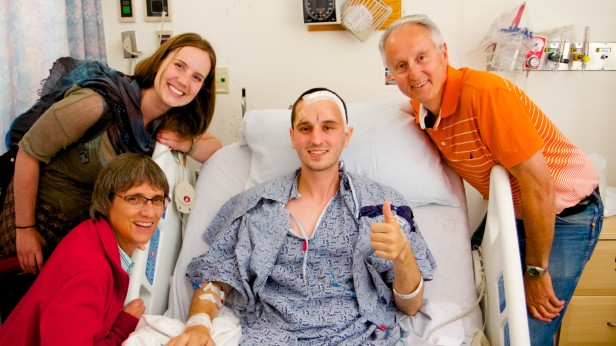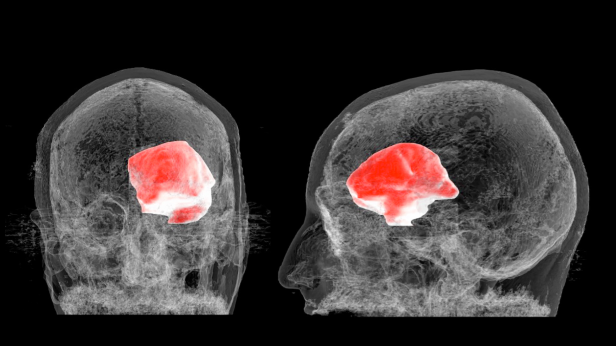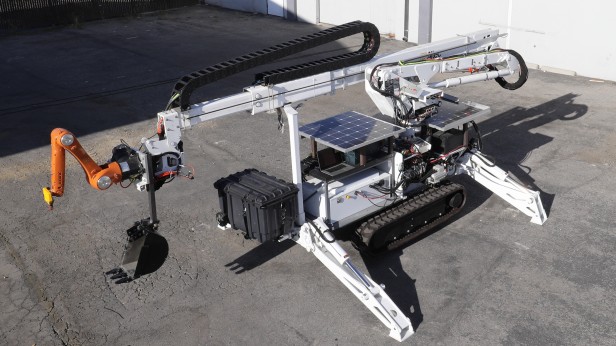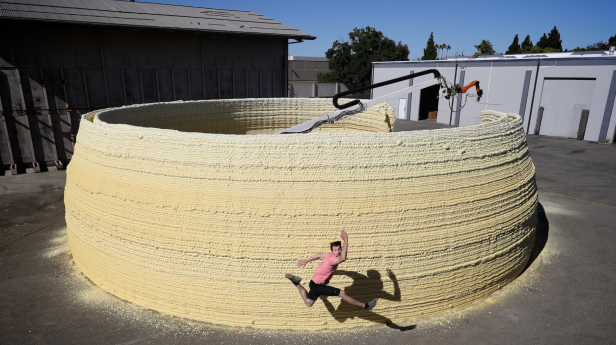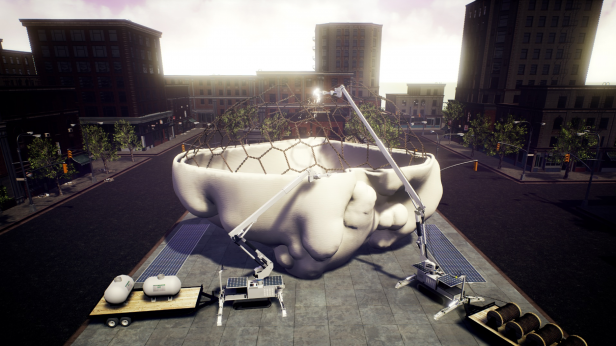Curiosity, Serendipity, and a Brain Tumor
Can a hospital “Share” button save us?
“You have got to be kidding me,” my mom said, followed by a roar of laughter from my family as they all opened boxes containing an unusual holiday gift. It was December 2014, and we were gathered in Boston, spending our first family Christmas away from our Canadian home. As I gleefully explained, I was turning the tables on my parents, who had a tradition of giving us Christmas tree ornaments. I had 3-D-printed ornaments for everyone else: replicas of my baseball-size cancerous brain tumor.
At the time, I was a graduate student at MIT. I was living the mad-scientist life that I had always dreamed of as a curious kid, constructing massive robots to 3–D-print buildings, creating fluidic wearables to host living systems, and even using thousands of volts in my dorm to develop additive glass fabrication techniques. And I found that everyone at MIT retained this same childlike curiosity: always asking why, finding fascination in even the dullest situation, and most important, taking advantage of serendipity. And oddly enough, this same curiosity helped save my life.
I often volunteered for research studies to help advance science—and because I was just plain curious. In 2007, I participated in a brain study and my MRI data revealed a small abnormality. Although I had no symptoms, I had my brain rescanned in 2010, which confirmed that nothing had changed. But in 2014, I started smelling a faint vinegar-like scent for several seconds each day. Then I remembered that the abnormality on my scan was near the smell center of my brain. My doctors were not very concerned, but at my request, they booked another scan for a month later. That scan showed an extremely large tumor that covered around 10 percent of my brain. Three weeks later, I had a 10-hour “awake surgery.” I owe my life to my amazing medical teams, an incredible network of MIT professors, and the invaluable support of family and friends.
Throughout the experience, I constantly gathered as much personal medical data as I could. I ended up with more than 200 gigabytes, including clinical, research, and even self-generated data. (See it at www.stevenkeating.info.) The information proved incredibly useful for my health-care decisions, informing my choices regarding radiation, chemotherapy, and suitable clinical trials, for example. Being able to share it with family, friends, other patients, and researchers also generated surprisingly powerful medicine: emotional support.
But it was shockingly difficult to obtain my own medical data. I would receive dozens of CDs in the mail, but no tools to use the highly complex information they contained. Legal gray zones presented an even bigger challenge. For instance, federal policies on clinical lab tests performed on humans prevented me from accessing my own tumor’s genome sequence from a research study. Why couldn’t there be a hospital “Share” button, under the control of the patient? A Google Maps for health? A hospital App Store—with third-party tools enabled by APIs—that would let patients easily access, use, and even share their data?
An MIT professor who helped me understand my mutation invited me to speak about these questions during one of his research talks. I nervously agreed, in part to thank him for all his help. Serendipity struck again. That short talk led to a longer talk and a New York Times article that generated thousands of supportive e-mails from patients, doctors, and researchers. Since then, I have given dozens of talks at international conferences, served as an invited member of the Federal Precision Medicine Task Force, and even made it into the White House for an event after my last day of proton radiation without triggering the Geiger counters at the entrance (phew!).
While health care is incredibly slow to change, I believe the next revolution has begun. More patients are starting to ask for their data, recent projects such as OpenNotes are experimentally demonstrating the incredible benefits of increased data access, and governments are starting to increase support. This revolution is beginning from the bedside, and it will be driven by our curiosity about our own data.
Steven Keating, SM ’12, PhD ’16, earned his doctorate in mechanical engineering in the MIT Media Lab’s Mediated Matter group. He now works in Silicon Valley.
